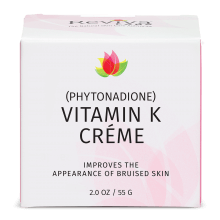Ingredients, Natural, Skin Care
What is Chinaberry and why is it good for your skin?
The Chinaberry tree, scientifically referred to as Melia Azedarach, offers a plethora of benefits for skin health. Originating from regions of Indomalaya and commonly found in India, this tree is far more than just an ornamental marvel. It holds a significant place in Ayurvedic medicine and has recently gained momentum in the skincare industry for its impressive skin-enhancing properties.
What is the Chinaberry Tree?
Also known as the Bakayan tree, Persian lilac, Pride of India, and Maha Neem, the Chinaberry tree is an ornamental plant native to the Indomalaya regions. It is often found in parks and alongside roads throughout India. Despite its aesthetic appeal, the Chinaberry tree is not just for show. Its various parts, including the bark, leaves, fruit, flower, and seeds, offer a treasure trove of health benefits.
The Role of Chinaberry Tree in Ayurveda
The Chinaberry tree plays an essential role in Ayurveda, the traditional Indian system of medicine. Almost all parts of the tree are used in diverse treatments, especially for skin-related issues. According to Ayurveda, the tree pacifies the pitta dosha, responsible for metabolic activities and digestion in the body. It possesses an astringent, pungent, and bitter taste and exhibits a cooling potency.
Skin Health Benefits of Chinaberry Tree
The Chinaberry tree is laden with potential skin health benefits. From treating skin diseases to reducing inflammation, this tree is a natural powerhouse for skincare.
Chinaberry Tree for Women’s Health
The chemical compounds present in the Chinaberry tree can provide relief from heavy and painful menstrual periods. The powdered seeds of the Bakayan tree are used for treating vaginal infections, making it extremely beneficial for women’s health.
Chinaberry Tree for Skin Diseases
One of the main health benefits of the Chinaberry tree is its ability to alleviate skin diseases. According to Ayurveda, the tree is a ‘Raktadoshahar’- a blood purifier. The fresh juice from its leaves can be applied externally on the skin to treat conditions like eczema, ringworm, itching, and burns.
Chinaberry Tree for Kidney Problems
The bark of the Chinaberry tree contains chemical compounds that can help reduce high serum creatinine and uric acid levels, thereby aiding in the treatment of kidney problems.
The Protective Properties of Chinaberry Tree
Ayurvedic traditions utilize the Chinaberry tree for its protective properties. The leaves of this tree can prevent abnormal cell growth in the body, thus protecting against tumors and chronic diseases. Moreover, the tree’s ability to remove excess fat or cholesterol from the body adds to its protective characteristics.
Cautions and Considerations
While the Chinaberry tree offers numerous health benefits, it’s important to note that all parts of the plant contain toxins that can cause gastric tract irritation and degeneration of the liver and kidneys. Its fruit is particularly toxic and has been known to cause fatalities if consumed in large quantities. Therefore, it’s crucial to use this “raw” plant (i.e., the leaves and fruit and seeds) under the guidance of a qualified practitioner.
Chinaberry Tree for Sustainable Skincare
The Chinaberry tree is a sustainable skincare solution. It grows rapidly, making it a renewable resource for skincare products. Furthermore, it’s a natural alternative to synthetic ingredients, aligning with the growing demand for clean, green, and sustainable skincare.
The Future of Chinaberry in Skincare
With its impressive range of health and skincare benefits, the Chinaberry tree holds promise for the future of skincare. As consumers become more conscious of the ingredients in their skincare products and their environmental impact, the use of natural ingredients like the Chinaberry tree will likely increase. As research continues to uncover the potential of this powerful plant, its use in skincare is set to revolutionize the industry.
The Chinaberry tree is a potent natural resource for skincare. It offers numerous health benefits, particularly for skin health, women’s health, and kidney health. However, due to its potential toxicity when eaten, it must be used with caution. Though in topical treatments it’s presents relatively low risk. With further research and responsible use, the Chinaberry tree could pave the way for a new era of sustainable, effective, and natural skincare solutions.











